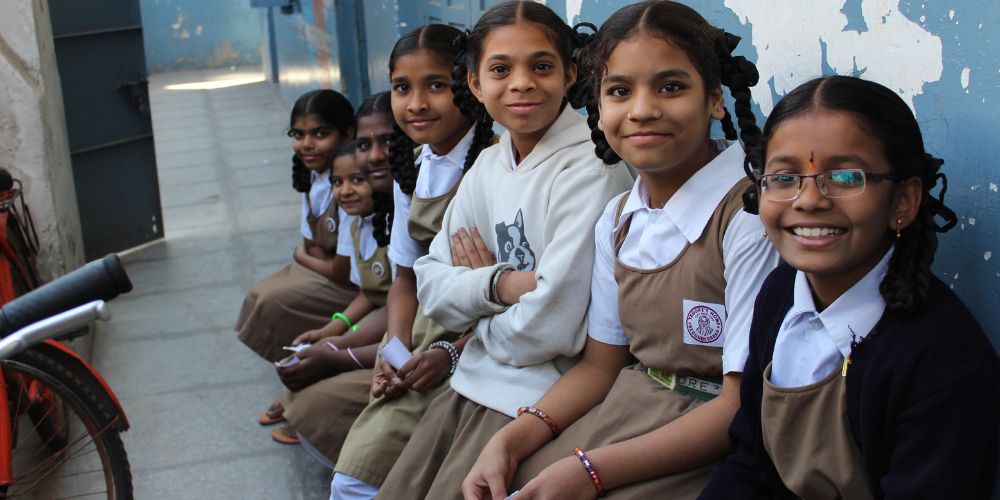Schoolgirls in India Photograph: Priya Morjaria
We don’t know how many children worldwide have problems with their eyesight. The best estimates suggest that globally, almost 450 million children need glasses and around two million are blind.
To learn effectively, children need to be able to see clearly. Children with poor eyesight in low- and middle-income countries are up to five times less likely to be in formal education.
To combat this, eye health providers across the world run school eye health programmes that find and treat children who need access to eye care. But they are hampered by the scarcity of reliable information about children’s eye health needs.
Developed with ICEH and using Peek Vision’s software for data collection and analysis, the School Eye Health Rapid Assessment (SEHRA) enables programmes to understand not just the epidemiological data — such as how many children have vision-impairing versus non-vision-impairing conditions — but also what these specific conditions are. More importantly, it categorises them by the types of services that will be required to address them.
But SEHRA goes beyond clinical data. It explores the broader environment where the school eye health programme will operate, gathering crucial information on sectoral legislation, policy and strategy, institutional and service delivery environment, human resources, supply chain, and potential barriers.
SEHRA’s impact so far
We developed SEHRA with an advisory group of leading eye health organisations and we’ve now completed nine SEHRAs, including five pilots, with partners across six countries: South Africa, India, Pakistan, Liberia, Uganda and Ethiopia. The results have provided interesting insights.
In Liberia, the SEHRA with Sightsavers was described as a catalyst for national strategic discussions about the future direction of school eye health. “The output of SEHRA is exactly what was needed, it’s doing what we hoped it would do!” Says Sumrana Yasmin, Technical Director for Eye Health at Sightsavers. “SEHRA provided invaluable data to scale our School Health Integrated Programme more effectively. We welcome this tool, which assists in designing, planning, implementing, and monitoring a school eye health programme.” Sightsavers is now planning to implement SEHRA in Kenya and Nigeria in the coming months.
The SEHRA completed in Uganda with EYElliance and Clinton Health Access Initiative (CHAI) is the most representative school eye health survey ever done in the country. Maggie Dawson from EYElliance says: “The SEHRA has facilitated discussion both at Ministries of Health and Education, to ensure that all children, especially the most vulnerable, receive the eyeglasses they need to thrive in school. The data gathered from this assessment will not only guide resource prioritization but also inform policy development and institutional frameworks, laying the foundation for a national-scale, evidence-based school eye health initiative.” The Ministry of Education has recently used the data to advocate for additional funding allocations from development partners.
Finally, the data from India with Dr Shroff’s Charity Eye Hospital provides exciting validation of SEHRA’s reliability. When we compared SEHRA findings with programme data from the same region, the results were remarkably similar, confirming SEHRA’s accuracy as a baseline assessment tool and what programmes will actually encounter in the field.
Four key takeaways from SEHRA data:
- Evidence-based programming: SEHRA provides robust evidence to implement programmes that genuinely meet the eye health needs of school-going children while accounting for local environmental readiness and capacity
- Regional variations matter: SEHRA reveals significant regional differences in condition prevalence—for example, uncorrected refractive error rates of 4.0% in India versus 0.07% in Liberia, and conjunctivitis rates of 0.8% in India versus 3.5% in Uganda
- Quality measurement: SEHRA measures effective refractive error coverage (eREC)—how well programmes are reaching and treating children who need glasses—and identifies quality gaps. These serve as valuable indicators for measuring progress at both regional and national levels
- Advocacy support: Including school eye health programmes in national eye health and inclusive education plans requires the comprehensive, credible evidence that SEHRA provides

